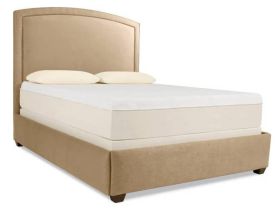Weathering the Recession Storm

Smart businesses found ways to weather the storm.
If you’ve been to the doctor within the past three years and flipped through the usual selection of business publications, you might conclude there have been little to no success stories to come out of America’s recent recession. But, hidden between the latest stacks of negative headlines are the untold stories of businesses that have weathered this economic storm, and have nothing but optimism for the future.
Workforce, Distributors’ Well-Being Remain a Priority
Like Link-Belt Construction Equipment Company, North America’s leading manufacturer of telescopic and lattice boom cranes. While the economic downturn did not spare Link-Belt from things like workforce reductions and sporadic plant shutdowns, President and CEO Chuck Martz says his company has not just survived the recession, but is already seeing an upswing in business mere months into the recovery.
One reason Martz believes Link-Belt did so well is because he and his management team made a concerted effort to maintain a highly motivated, loyal workforce. The first strategy: restrict layoffs to contract employees only.
“Unfortunately, during our last downturn in 2002 and 2003, it got very deep and we laid off some of our core employees,” explained Martz. “We learned from that experience that this hurt morale considerably. So, we made every effort to keep our core workforce in place this time.”
Beyond its core workforce, Link-Belt also went the extra mile to ensure its distributors stayed healthy throughout the recession by allowing them to cancel orders when times got tough.
“Some other manufacturers within the construction industry have the attitude that if you place an order, you have to take it no matter what,” said Martz. “That just doesn’t work out. We and our distributors are in a partnership and they are an extension of the Link-Belt arm.”
A Unique Opportunity to Improve Market Share, Boost Innovation
And while other companies were looking to cut costs any way they could, Link-Belt took the opposite approach and spent $7 million on an expansion of its existing manufacturing facility in preparation for a new product launch this year.
We believe strongly that design and engineering of new products is the lifeblood of the company so, during the recession, we developed two new products. One of which makes Link-Belt the only North American manufacturer of all-terrain cranes,” explained Martz. “…. We’ve seen these times before and, if you’re not prepared, then you really can never catch back up when the recovery comes. We didn’t want to be in that position. We wanted to be in a position where, as the recovery starts and we had new products, we can gain more market share. And, that’s what we expect to happen.”
No Slowdown in Marketing New Products

Tempur Cloud Supreme, launched in the fall of 2009,
is Tempur Pedic’s best-selling product.
Another company that has made lemonade from the recession’s lemons is Tempur Pedic International, a high-end bedding and mattress manufacturer that has been highly strategic in planning for business in the post-recession economy. Like Link-Belt, Tempur Pedic invested money in new product development during the recession so the company could grab more market share when the economy rebounded. According to Dale Williams, Tempur Pedic’s executive vice president and chief financial officer, this effort resulted in the company’s most successful product launch to date.
“We managed our cost in such a way that we were able to continue communicating with our customers and building our brand, but we also conducted critical evaluation and research into the market and our customers so that as we exited the recession, we had developed a new product line that is the most successful new product launch in our company’s history,” said Williams. “So, even when times are tough, you have to continue to invest for the future.”
